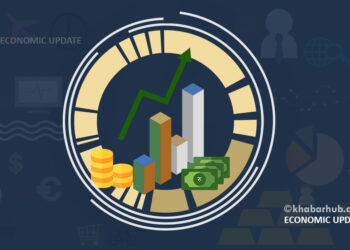Many developing countries have so far avoided the high COVID-19 infection and mortality rates that are being experienced elsewhere.
While that may be good news, at least in the short term, the bad news is that these countries are set to be among the hardest hit in economic terms.
The World Bank estimates that as many as 100 million people could fall into extreme poverty as a direct result of the crisis. This is only the tip of the iceberg, as developing-country exports collapse, and small businesses, communities, and livelihoods implode.
The fiscal implications are equally dire, with tax revenues in freefall and extraordinary increases in public spending. From Bangladesh to Brazil, developing countries are trying to keep their economies afloat through debt-financed public spending.
South Africa’s $26 billion emergency fiscal-stimulus package, the largest in the country’s history, amounts to almost 10% of its GDP.
A sovereign-debt crisis could be in the cards. Globally, emerging-market debt has increased rapidly to over $70 trillion.
There is now a compelling opportunity – indeed, an urgent need – to develop a performance-based new approach to sovereign debt that bolsters economic recovery and builds resilience through better stewardship of developing countries’ balance sheets, with natural capital featured alongside financial assets.
This has been fueled by a decade-long search for yield in a world of excessive liquidity and low interest rates, delivered courtesy of the solution adopted to deal with the economic fallout of the 2008 global financial crisis: quantitative easing.
The debt burden in so-called frontier economies has increased to $3.2 trillion (114% of their collective GDP), from less than $1 trillion in 2005.
Sovereign-debt restructuring is therefore inevitable, presaging a period of pain on all sides. This implies an urgent need to provide immediate help and to devise longer-term solutions to the debt problem.
One such solution could be to “green” emerging and developing countries’ sovereign debt. This would be done by linking a country’s debt service to its success in protecting or enhancing so-called natural capital – essentially, the biodiversity of their animal and plant species.
Many of the affected countries are rich in biodiversity, yet their natural capital is increasingly coming under threat, including from climate change.
Humans are innately incapable of multitasking, with neuroscientists assuring us that it is far more efficient to do one thing at a time.
Investing in natural capital may seem indulgent. But greening emerging and developing countries’ sovereign debt could ease their economic crises, while restoring and protecting critical biodiversity assets like rainforests, wetlands, oceans, and endangered species, as well as delivering global public goods and sustainable productivity growth.
Doing so would also turn a painful necessity into a threefold virtue. First, offering lower interest rates and principal repayments in return for improvements to debtor countries’ natural capital would ease immediate fiscal pain.
Second, such improvements would boost these countries’ sustainable productivity growth and prosperity by strengthening their increasingly valuable natural capital.
Third, doing so at a time of historically rock-bottom interest rates would offer a cheap way to secure natural assets that are critical to global security, food supply, and the fight against climate change.
In short, there is now a compelling opportunity – indeed, an urgent need – to develop a performance-based new approach to sovereign debt that bolsters economic recovery and builds resilience through better stewardship of developing countries’ balance sheets, with natural capital featured alongside financial assets.
Acting to help communities and countries weather the economic crisis, while improving natural capital and delivering positive long-term economic prosperity, is both possible and necessary.
About $750 billion worth of green bonds have already become part of the global debt landscape. Debt instruments with green-performance-linked interest rates are an obvious next step. Big data can now provide a robust foundation for delivering the required, real-time metrics to build trust and avoid gaming on all sides.
Champions are needed, and there are some obvious choices. China and the European Union, both green pioneers on the international stage, hold a sizeable chunk of developing countries’ sovereign debt and have considerable influence over other debt holders. Together, they could advance green sovereign-debt outcomes.
Grand gestures of multilateralism and coordinated deal making are not what we need make this work. Indeed, we may have to avoid them to reach productive deals quickly.
In the right political environment and with some deft technical brokering, it would be smarter and faster for debt-heavy, biodiversity-rich countries and their creditors to reach individual deals. Learning and network effects, with some nudging, will do the rest.
Humans are innately incapable of multitasking, with neuroscientists assuring us that it is far more efficient to do one thing at a time.
The opposite is true when it comes to running our societies. Acting to help communities and countries weather the economic crisis, while improving natural capital and delivering positive long-term economic prosperity, is both possible and necessary.
(Simon Zadek is Chair of the Finance for Biodiversity Initiative)
Copyright: Project Syndicate, 2020









Comment